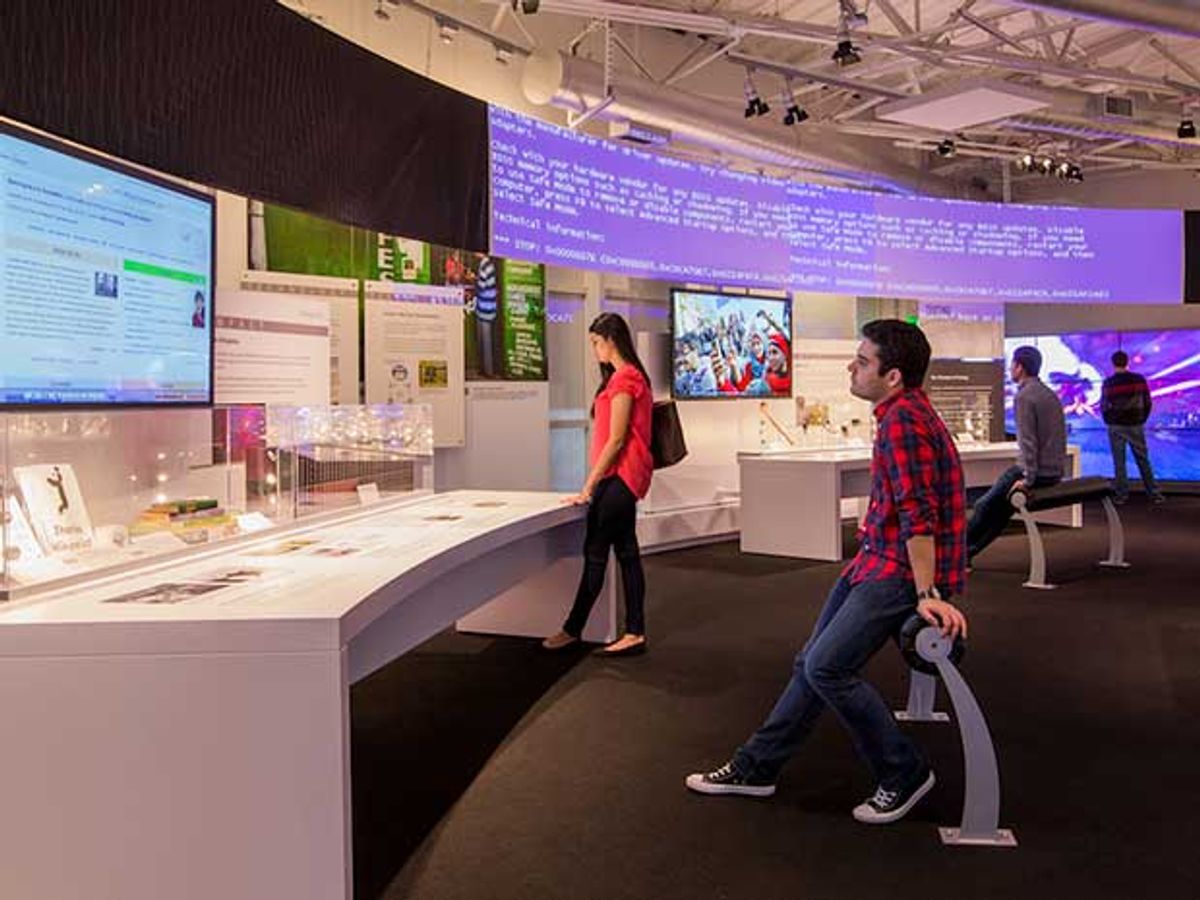A museum dedicated to collecting and displaying the artifacts of computing history, like pieces of the ENIAC and the Apple I, has turned its focus on something far less tangible—software engineering. This Saturday, the Computer History Museum in Mountain View, Calif., opens a new exhibition to the public: “Make Software: Change the World!” Its goal—to show that software engineers are truly the heroes of what it calls the “Transformation Age,” changing society in dramatic ways.

The US $7 million exhibit, for the first time, includes a large interactive component—hands on tasks and games designed for children approximately aged ten and up. That age target was picked, museum vice president Kirsten Tashev said, because it is during the middle school years that children start thinking seriously about what they want to do with their lives. The exhibit also aims to show tourists, who represent 40 percent of the museum’s visitors, what Silicon Valley is all about, and to help local software engineers explain what their careers involve to their children and parents. “This exhibit makes them look cooler to their kids,” says Tashev.
Selecting exactly what software developments could best tell the story of software engineering was a challenge for curators. The team came up with a list of 100 important applications of software likely to be familiar to the average person today, and whittled that list down to seven projects, dividing them into three thematic areas:
- Perception and Reality, which tells the history of photo editing, culminating with Photoshop, and of digital music, in particular, the MP3 (and lets visitors test their ears in distinguishing between different recording technologies).
- Life and Death, which tells the story of the development of the MRI (and lets visitors try their hands at MRI interpretation) and of car crash simulation
- Knowledge and Belonging, which goes behind the scenes of Wikipedia to explain the world of the Wikipedians, looks at World of Warcraft, and describes the development and impact of texting (a speed-texting challenge in this section is likely to be a hit among teen visitors; advice to the museum staff—you’ll need a couple more stations for this one).

Museum staff noted that they made these selections before any companies were contacted, though the companies included were helpful. One certainly could—and lots of people will—argue about these selections; staff members note that in particular they’ve had a lot of pushback about the inclusion of World of Warcraft. (I’d be interested in knowing what seven technologies you would have picked, in the comments below.)
In spite of the difficulty of displaying software as an artifact (beyond early packages of each commercial product displayed), each section of the exhibit has plenty of “stuff,” in particular, items showing how a particular task was accomplished before today’s software took over. In the MP3 section, for example, the display includes an Edison phonograph doll, a portable music player invented in the 1870s that used wax cylinders. “We like to put computer history in the context of human history,” Tashev explained. The curators also like to remind visitors, no matter what their age, of their place in contemporary history, offering up, for example, a recreation of the kind of record store I visited as a teen. (Thanks for the memories!)

The central hub of the exhibit space focuses on programming in general, with traditional computers running programming challenges and touch tables running a programming game called Frog Pond. (I got really into this game and could certainly have spent more time there.) A small theater in this section runs a short documentary on the development of the Adobe Mix app: filmmakers followed the Adobe team working on the project for two years. Tashev hopes this will just be the first of many documentaries produced for the collection telling stories of software developments.
Tekla S. Perry is a former IEEE Spectrum editor. Based in Palo Alto, Calif., she's been covering the people, companies, and technology that make Silicon Valley a special place for more than 40 years. An IEEE member, she holds a bachelor's degree in journalism from Michigan State University.


